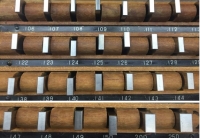This article presents two procedures that can be used to build precision heights from gage blocks. One is simpler to use but can require one more block than absolutely necessary. In no time you will be able to look at the target height and immediately start pulling the correct blocks. The other procedure is more complex but minimizes the number of blocks needed.
I have tried my best to verify that these two procedures always give the correct results. If anyone finds a problem, please let me know so I can correct it.
If you are interested, please see
http://rick.sparber.org/SPGB.pdf
Your comments are welcome. All of us are smarter than any one of us.



 LinkBack URL
LinkBack URL About LinkBacks
About LinkBacks


 Reply With Quote
Reply With Quote



Bookmarks